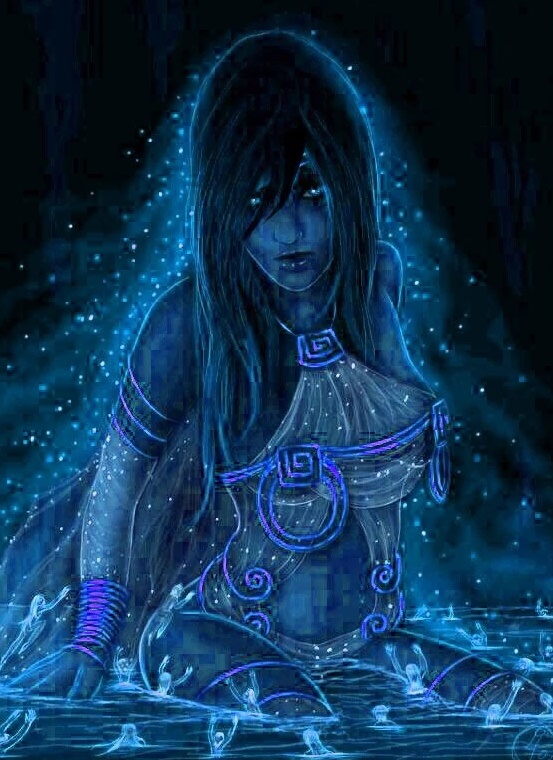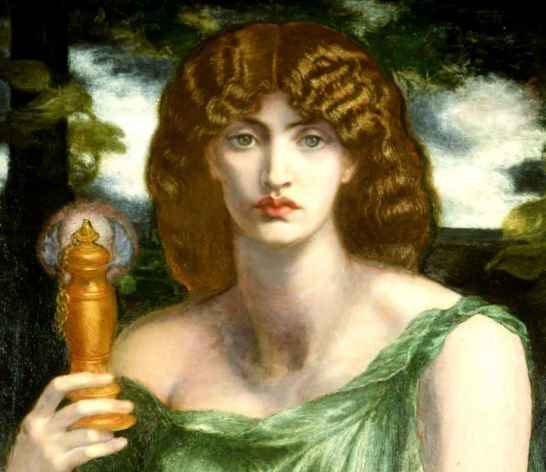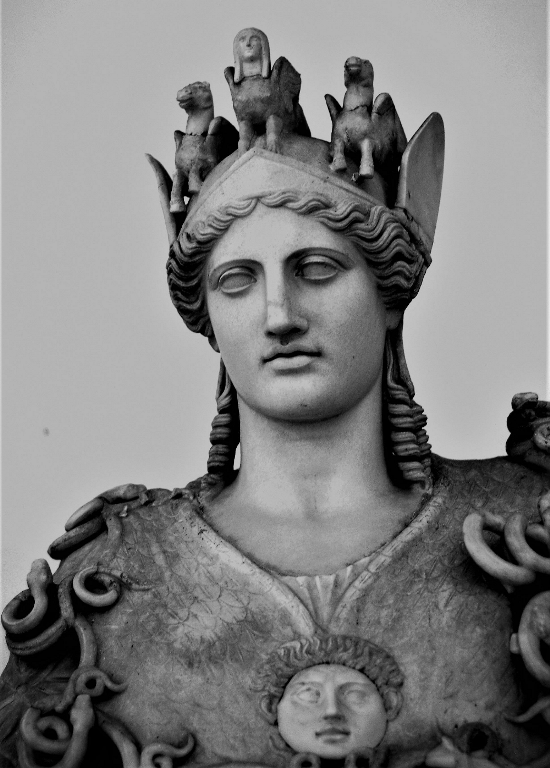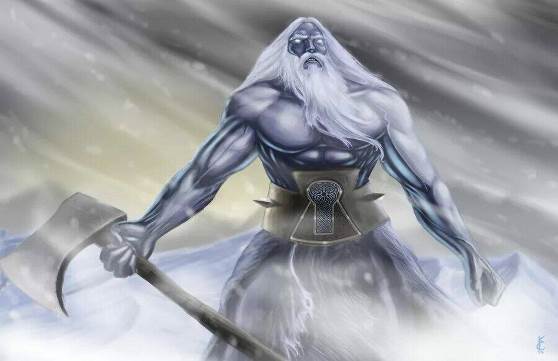Styx Titan Goddess
- Details
- Hits: 340
Styx Titan Goddess

Styx was a Titan goddess in Greek mythology, daughter of the Titans Oceanus and Tethys, thus being one of the Oceanid sisters.
Styx's Family
She was the goddess of the River Styx, and wife to the Titan Pallas, with whom she had four children; Zelus, Nike, Kratos, and Bia.
Styx in Titanomachy
Styx fought on the side of Zeus and the Olympians during the Titanomachy, the great war between the Titans and the Olympians, the latter emerging victorious. To honour her, Zeus gave her name to the binding oath that was taken by the gods.
The River Styx
The River Styx was the boundary between the realm of Earth and the Underworld. In its waters, the great hero Achilles was submerged when he was an infant by his mother Thetis, thus making him invincible; however, as she held him by his heel, that was the only spot on his body that was vulnerable. This is how the phrase Achilles' heel was created to signify a vulnerable spot.
Mnemosyne Goddess of memory
- Details
- Hits: 345
Mnemosyne Goddess of memory

Mnemosyne was one of the Titans, daughter of Uranus and Gaea, and goddess of memory. She was also occassionally referred to as Mneme; however, this was the name of another goddess.
Oracle of Trophonios
She was the oracular goddess of the underground oracle of Trophonios in the region of Boeotia.
Nine Days with Zeus
Zeus slept with Mnemosyne for nine consecutive days, eventually leading to the birth of the nine Muses. In Hesiod's Theogony, the kings and poets were inspired by Mnemosyne and the Muses, thus getting their extraordinary abilities in speech and using powerful words.
The river Mnemosyne
The name Mnemosyne was also used for a river in the Underworld Hades, which flowed parallel to the river of Lethe (which means forgetfulness). Usually, the souls of the dead would drink water from Lethe, so that they would forget their past lives when they would be reincarnated. However, the souls of the novices were told to drink water from Mnemosyne. This myth may have been part of a small mystic religion or be tied to Orphic poetry.
Metis Titan-Goddess
- Details
- Hits: 827
Metis Titan-Goddess

Metis was one of the Titans, a daughter of Oceanus and Tethys; therefore, she was considered an Oceanid.
Metis and Zeus
She was the first wife of Zeus, and became the goddess of wisdom, prudence and deep thought. According to a prophecy, Metis would bear two children, the first being Athena, while the second one, a son, would be so powerful that would overthrow Zeus. Zeus, afraid of this, tricked Metis into turning herself into a fly, and swallowed her.
However, Metis was already pregnant to Athena, and, inside Zeus' stomach, she started creating a helmet for her daughter. Zeus was in such pain that he asked Hephaestus to hit his head with an axe; as soon as his head was opened, Athena jumped out fully grown and clad in armour.
Athena's Mother
It is often said that Athena had no mother and she was born out of Zeus alone; this doesn't necessarily conflict with this account, as the ancient Greeks believed that children were descendants of the fathers, while mothers did not contribute to the creation of their children.
Hyperion Titan God of heavenly light
- Details
- Hits: 5765
Hyperion Titan God of heavenly light

Hyperion was one of the Titans, son of Uranus and Gaia. He represented light, wisdom and watchfulness.
Hyperion's Children
He was the father of the sun, the moon, and the dawn. In some early texts, the sun is mentioned as Helios Hyperion; however, in later texts, including Homer's and Hesiod's writings, Hyperion and Helios are two different deities, the latter being a physical representation of the sun. Hyperion is not mentioned in the Titanomachy, the War that resulted in the overthrow of the Titans and the start of the era of the Olympians.
Hyperion was married to his sister, Theia, and they had three children, Helios (the sun), Selene (the moon) and Eos (the dawn).
The Four Pillars
He was considered one of the four pillars that hold the heavens and the earth apart, and since his daughter was dawn, he was probably the pillar of the east. The other three pillars were his brothers Coeus (pillar of the north), Crius (pillar of the south), and Iapetus (pillar of the west). These four Titans were the ones that held their father Uranus in place, while Cronus castrated him with a sickle.
Crius Titan God
- Details
- Hits: 375
Crius Titan God

Crius was one of the Titans, son of Uranus and Gaea. He married Eurybia, daughter of Pontus and Gaea, and had three children, Astraios, Pallas and Perses.
Crius grandchildren
From the marriage of Astraios (god of dusk) and Eos (goddess of dawn): the four Anemoi (Winds - Boreas, Notus, Eurus, Zephyrus), and the five Astra Planeta (Wandering Stars, meaning planets - Phainon, Phaethon, Puroeis, Eosphoros, Stilbon).
From the marriage of Pallas (god of warcraft) and Styx (goddess of the homonymous river): Zelus (glory), Nike (victory), Kratos (power), Via (force), Scylla, Fontes (fountains), and Lacus (lakes).
From the marriage of Perses (god of destruction) and Asteria (the starry one): Hecate (goddess of wilderness, childbirth, and magic).
Crius was considered one of the four pillars that hold the heavens and the earth apart. He represented the pillar of the south, while the other three pillars were personified by his brothers Iapetus, Coeus and Hyperion. The four brothers had an important role during the dethroning of their father, Uranus; as they were in the four corners of the earth.
Titanomachy
In the Titanomachy, the war between the Titans and the Olympians, Crius participated siding with the Titans, but did not have a specific role. When the Titans were defeated, Crius along with the rest of his siblings was thrown into Tartarus, the lower level of the Underworld.